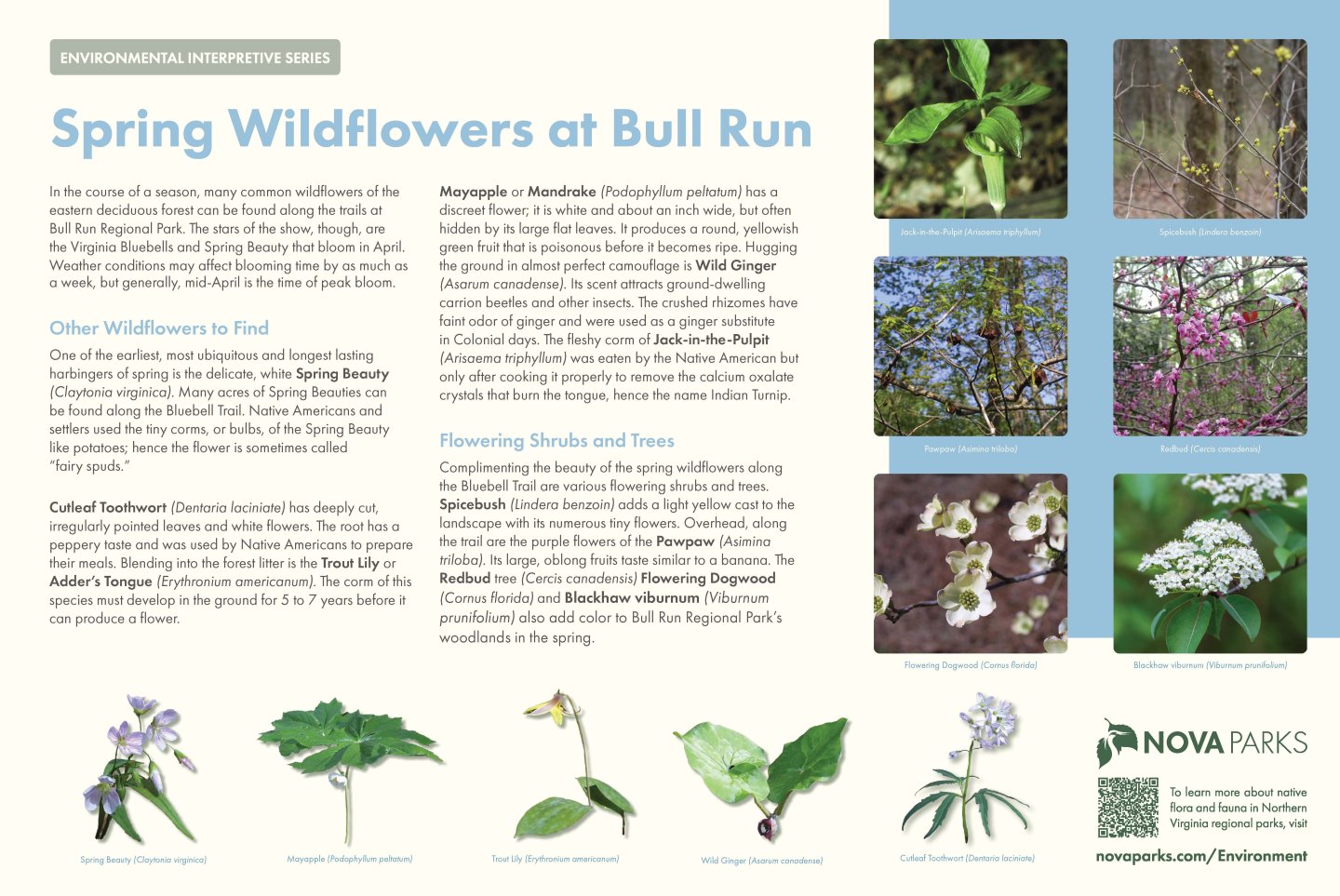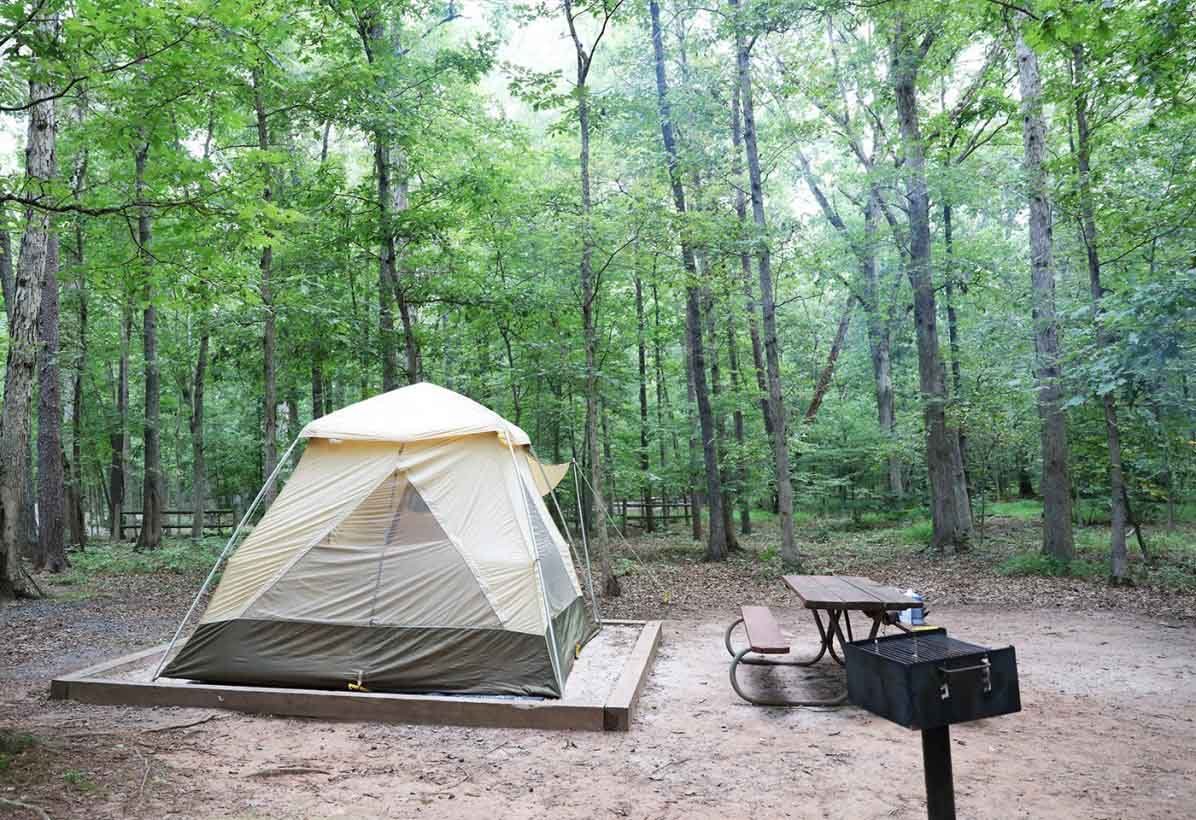Bull Run Regional Park
Environmental Interpretive Series: Spring Wildflowers at Bull Run

In the course of a season, many common wildflowers of the eastern deciduous forest can be found along the trails at Bull Run Regional Park. The stars of the show, though, are the Virginia Bluebells and Spring Beauty that bloom in April.
Weather conditions may affect blooming time by as much as a week, but generally, mid-April is the time of peak bloom.
Learn More
Other Wildflowers to Find
One of the earliest, most ubiquitous and longest lasting harbingers of spring is the delicate, white Spring Beauty (Claytonia virginica). Many acres of Spring Beauties can be found along the Bluebell Trail. Native Americans and settlers used the tiny corms, or bulbs, of the Spring Beauty like potatoes; hence the flower is sometimes called “fairy spuds.”
Cutleaf Toothwort (Dentaria laciniate) has deeply cut, irregularly pointed leaves and white flowers. The root has a peppery taste and was used by Native Americans to prepare their meals. Blending into the forest litter is the Trout Lily or Adder’s Tongue (Erythronium americanum). The corm of this species must develop in the ground for 5 to 7 years before it can produce a flower.
Mayapple or Mandrake (Podophyllum peltatum) has a discreet flower; it is white and about an inch wide, but often hidden by its large flat leaves. It produces a round, yellowish green fruit that is poisonous before it becomes ripe. Hugging the ground in almost perfect camouflage is Wild Ginger (Asarum canadense). Its scent attracts ground-dwelling carrion beetles and other insects. The crushed rhizomes have faint odor of ginger and were used as a ginger substitute in Colonial days. The fleshy corm of Jack-in-the-Pulpit (Arisaema triphyllum) was eaten by the Native American but only after cooking it properly to remove the calcium oxalate crystals that burn the tongue, hence the name Indian Turnip.
Flowering Shrubs and Trees
Complimenting the beauty of the spring wildflowers along the Bluebell Trail are various flowering shrubs and trees. Spicebush (Lindera benzoin) adds a light yellow cast to the landscape with its numerous tiny flowers. Overhead, along the trail are the purple flowers of the Pawpaw (Asimina triloba). Its large, oblong fruits taste similar to a banana. The Redbud tree (Cercis canadensis), Flowering Dogwood (Cornus florida) and Blackhaw viburnum (Viburnum prunifolium) also add color to Bull Run Regional Park’s woodlands in the spring.


